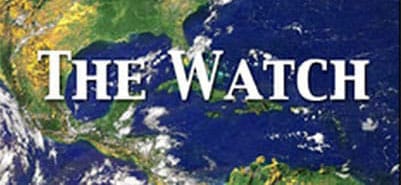Climate and Ecological Forecasting: Predicting and Preventing Health Risks
Ecosystems and ecosystem components are constantly changing in response to environmental drivers such as climate variability, extreme weather conditions, pollution, or habitat change. Being able to forecast these changes can provide information about how people, economies, and communities may be affected. Local authorities and members of the public use these early warnings to make decisions to protect the health and well-being of a particular area, for instance closing a shellfish bed or increasing monitoring of public drinking water.
NOAA focuses on coastal ecological forecasts of harmful algal blooms, hypoxia, pathogens (naturally-occurring marine bacteria), and species distribution. This presentation highlights some of these efforts, how these events affect people, health, and the environment (including those who do not live near the coast), and how incidences of these events are changing over time. The presentation will provide answers for some of the most common questions people have when visiting a beach that may be vulnerable to an ecological event, such as a harmful algal bloom. Can I eat that shellfish? Should I swim here? How do I know where to look for information? Some initial findings of the - at the time of this presentation - draft Climate and Health Assessment report, The Impacts of Climate Change on Human Health in the United States: A Scientific Assessment, will also be covered.

At the time of this broadcast Juli Trtanj was the One Health Lead for the National Oceanic and Atmospheric Administration (NOAA), responsible for developing and implementing Health Strategy across NOAA and with other Federal, state, local and international Agencies, academic and private sector partners. She was leading the integration of extreme weather and climate science in the Climate Program, and focused on Integrated Information Systems for extreme heat. She coordinated the NOAA One Health Working Group and Ecological Forecasting Roadmap efforts focusing on health and climate, and was the NOAA Lead for the Memorandum of Understanding between NOAA and the Centers for Disease Control.
Ms. Trtanj was also a co-chair on the US Global Change Research Program, Climate Change and Human Health Group and represented NOAA on the Office of Science Technology & Policy Pandemic Prediction and Forecasting Science and Technology Working Group. She was a Convening Lead Author for the National Climate Assessment Special Report on Climate Change and Human Health. Ms. Trtanj has represented NOAA on the International Working Group of the US Group on Earth Observations, and was the Water-Related Illness Component Lead for the Group on Earth Observations, and was directly involved with European, South African, Asian partners and the World Health Organization in the development of the Early Warning Systems, specifically for cholera and other water-related illness.
Ms. Trtanj was also an active collaborator in the NSF-funded Research Collaboration Network on Marine Emerging Diseases. She co-chaired the American Meteorological Society (AMS) Committee on Ecological Forecasting and has served on the AMS Board on Health and the Environment. From 1996 to 2015 she developed and directed multidisciplinary and multi-partner programs on Oceans and Human Health, and Climate Variability and Human Health. She has contributed to, reviewed, or edited sections of several IPCC and US National Climate Assessment reports and authored several book chapters and journal articles. She earned her Masters in Environmental Science from Yale School of Forestry and Environmental Studies in 1994, and her Bachelors in 1986 from the University of California Santa Barbara.
Education
Webinar Archives Education ResourcesStewardship
Supporting Stewardship Past Projects Focus Area Resources Applying for Funding
Search Education
Get Social
Last updated: 06/16/24
Author: NOAA
How to cite this article
